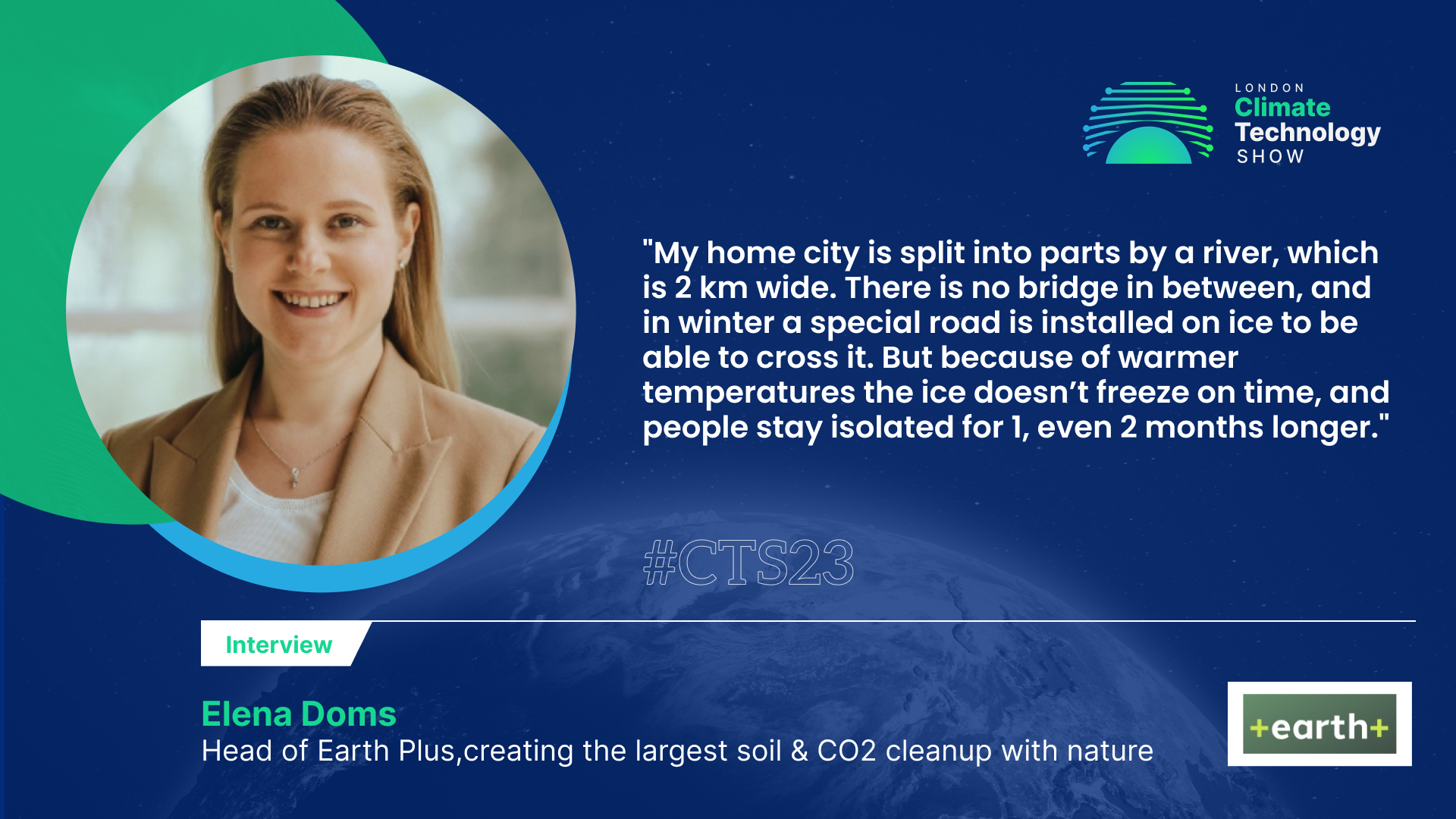Elena Doms, a resident of the Arctic, possesses firsthand experience regarding the repercussions of climate change in her region. Rather than succumbing to the fear of losing her home, she has embraced a vital mission to safeguard it. During a recent interview, Elena discussed her concerns with Muhammad Younis about climate change and outlined her proactive response to these challenges.
#CTS: What is your association with the Arctic? Could you please share the significant changes you have personally witnessed in the region during your time there?
I was born and raised in the Arctic. Spent 18 years there as a child. I grew up surrounded by ice and polar nights in winter. And spent summers outside in nature, learning to grow vegetables and berries and gathering mushrooms in boreal forests together with my parents. My mom still lives there. She is my eyes on the ground, sharing observations of changes there.
Some of the most significant ones are warmer winters. When I was a child, it was normal to have -30C. Now such temperatures are considered abnormal, and we only see -7C to -10C as an average during winter months. Temperatures even go above 0C in January. This has profound implications because a lot of infrastructure in the Arctic is based on ice. For example, my home city is split into parts by a river, which is 2 km wide. There is no bridge in between, and in winter a special road is installed on ice to be able to cross it. But because of warmer temperatures the ice doesn’t freeze on time, and people stay isolated for 1, even 2 months longer. Shops are running out of food. Patients cannot easily get to the hospitals.
Summers are changing too. When we had bad floods in Europe in 2021 it was a drought in my home region. Temperatures were around +30C for 2 months with no rain. This dries out Northern forests, which store 11% of world carbon mainly in their soils. These forests start burning and releasing this carbon into the atmosphere, turning from carbon sinks into carbon emitters.
#CTS: Since the Arctic region is among the places where the impact of climate change is noticeable enough, triggering anxieties; how do you respond to such anxieties?
Yes, Arctic is warming 4 times faster than the rest of the planet. Through a series of tipping points the North Pole is connected to the South Pole. They regulate the stability of our ecosystem on Earth. That means what happens in the Arctic impacts all of us. Because the moment it goes out of balance, so do we.
I respond to anxieties by action. All my work is devoted to climate action and nature. At Earth Plus we have a bold vision of creating the largest soil and CO2 cleanup with nature. We do that by using plants that clean and restore soils and capture 2-4 times more CO2 from the air in 4 months than a young forest in a year. We then lock this CO2 in local and circular construction materials for our cities.
And as an Arctic Artist, I paint my beautiful home, share its stories and fundraise for nature restoration projects around the world.
#CTS: What would be your advice to those living in places, removed from seeing direct impacts of climate change?
I don’t think we have many places like this anymore. Look at what is happening around the world. Extreme heat in the US, Europe, tropics and Asia. Floods and hail storms in Italy, Croatia, India and other places around the world. Wildfires in Canada, Spain and Greece. We start seeing extreme weather events every day. We are having over 20 consecutive hottest days on record ever and the Atlantic Ocean warming as much in 1 year as in the previous 15 years combined. We are the only lucky place in Northern Europe to have normal temperatures in July. I think by now almost everyone should see the direct impacts of climate change. Even if not in weather, then in disappearance of wildlife. My advice would be to pay attention to these impacts all around you. Accept that changes are dramatic and we are responsible for them. Spend more time in nature to reconnect with it. And then go and make a difference.
#CTS: Being involved in projects in Europe and beyond, how do you see the global response to Climate Change?
We don’t have a global response to Climate Change. We have a bunch of countries fighting and disagreeing with each other. We have a bunch of companies focusing on profits above all. And we have billions of people thinking they cannot make a difference. But we also have amazing innovations and passionate people everywhere. We need to come together, put our differences aside and have this truly global response. Like we did with the ozone layer and the pandemic. And this response needs to be 5-10 times stronger than what we have now. Then we stand a chance.
#CTS: How effective do you think events like the London Climate Technology Show are in reversing the ramifications of climate change?
Technology is a very important driver behind innovations for climate action. Events like the London Climate Technology Show are there to demonstrate such technologies and connect passionate people and decision makers. Such events are very powerful at creating momentum, inspiring hope and igniting action. I truly hope we’ll see amazing outcomes after your event!

